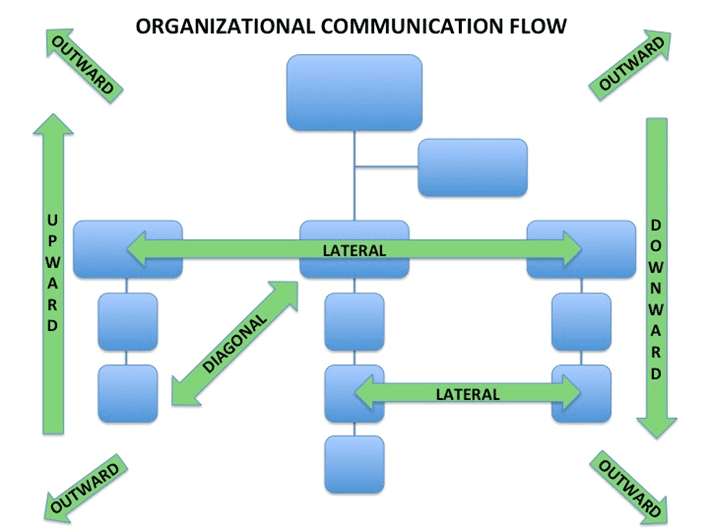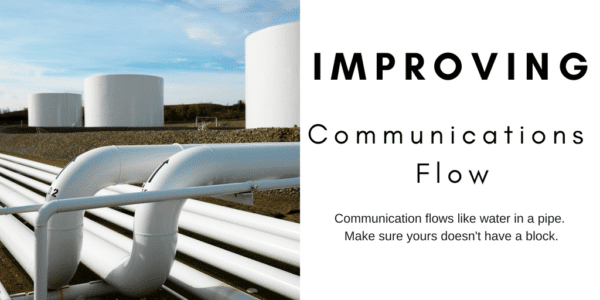At a recent leadership retreat we facilitated, the team wondered why morale was so low among their “rank and file.” This was a city department with a fairly regimented culture, so there was a clear hierarchy between field personnel and leadership. Leaders were frustrated when employees didn’t pay attention to their emails, and staff members were frustrated when leadership didn’t follow through on ideas or issues coming from the field. Each group felt the other was ignoring their needs and taking no action to improve. Combined with some recent leadership changes, these communication “blocks” contributed to a lack of trust on both sides.
You can think about communication flows across an organization like water moving through a series of pipes. Using a classic organization chart to help visualize this, information can travel in several different directions —downward, upward, outward, laterally, and diagonally—as shown below.

Just like water moving through pipes, communication flow can be helped or hindered by a number of factors. In plumbing, the flow of water can be changed by the size and shape of the pipe, how many turns it has to make, the presence of a pump on one end, whether there are obstacles that occlude or block the flow, and if there are leaks in the pipes. Similarly, information flow in an organization can be affected by what communication systems and structures are in place; how many different points or nodes there are between sender and receiver; whether senders push messages (e.g., email blasts) or receivers pull messages (e.g., downloading files from a company intranet site); and how much information “leaks” outside of the formal channels. In addition, the overall culture of an organization can influence the “diameter” of the information pipelines—are they “narrow” and discourage flow, or are they “wide,” encouraging flow?
Ultimately, we worked with the leadership team to restructure their senior leadership meetings, shifting the focus away from reporting and setting aside time each week to work on high-priority issues as well as good ideas that bubble up from the field staff. They also instituted an online idea-tracking form for staff to log ideas and suggestions for improvement. Leadership would then use this form to prioritize ideas and document status and progress. They also came up with an email “coding” system to help field personnel prioritize the many emails they receive, to ensure they see the important messages from leadership, such as policy updates, schedule changes, personnel announcements, etc.
By identifying where communication flows (and doesn’t) across your organization, you can often identify relatively easy solutions to open up the channels to better dialogue and increased trust.
